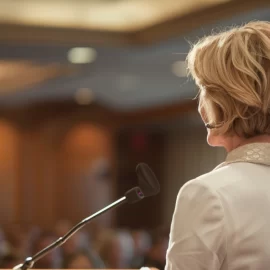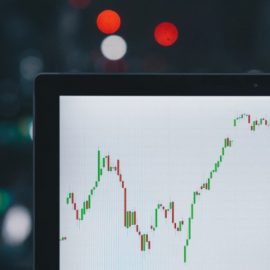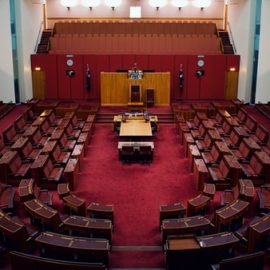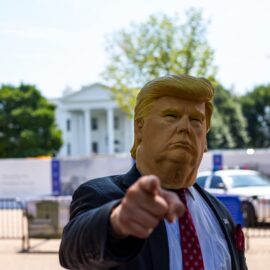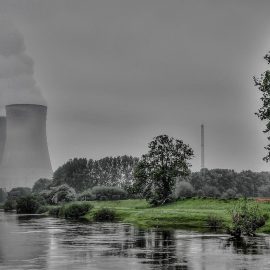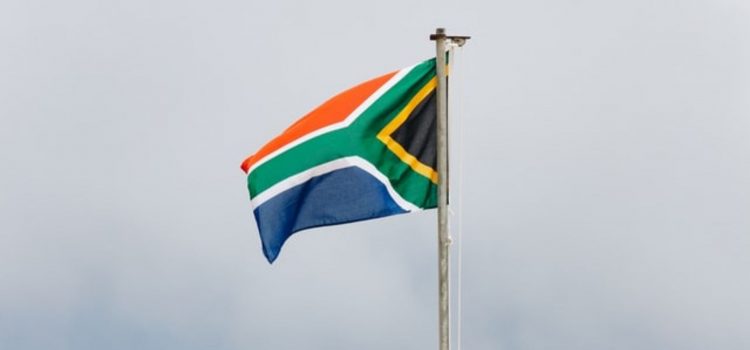
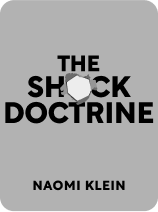
This article is an excerpt from the Shortform book guide to "The Shock Doctrine" by Naomi Klein. Shortform has the world's best summaries and analyses of books you should be reading.
Like this article? Sign up for a free trial here .
What was the role of the ANC in South Africa? Why was the ANC resisting the National Party?
In 1955, South Africa was ruled by the white supremacist National Party. That year, the African National Congress (ANC)—which, despite its name, is a political party rather than a congress—began fighting in earnest against their oppressive rule.
Learn how the ANC party started the liberation movement against apartheid.
The Freedom Charter
In 1955, the ANC started sending tens of thousands of volunteers to survey people about what they’d want in a post-apartheid state. The people’s demands, which included land for the landless, free education, higher wages, and shorter hours, were compiled into the Freedom Charter. One of the Charter’s most radical demands (in the eyes of the rest of the world) was that Africa should have the right to its own wealth, which includes the largest gold deposits in the world. That demand was in the charter because the African people recognized that apartheid wasn’t only about racism, but also about economics; a few men were reaping massive profits from the labor of millions.
The ANC officially adopted the Freedom Charter on June 26, 1955, but it would be decades before it took control of South Africa. While the ANC secretly passed around the Charter and worked to build support for their ideas, the National Party accused them of treason.
In the 1980s a new generation of freedom fighters picked up the Charter. This younger generation was fearless, militant, and ready to do whatever it took to topple the white supremacist state. They marched and protested relentlessly, refusing to back down even when met with tear gas and bullets.
Nelson Mandela’s Chance
One key player in this struggle was Nelson Mandela. He was a South African revolutionary who was imprisoned in 1962 on charges of treason. He spent 27 years in prison, but never backed down from his beliefs or gave up hope that the country could be free. He was, in many ways, both the face and the heart of the ANC party.
In 1990, Mandela wrote a simple two-sentence letter to his supporters outside the prison stating that the ANC was still committed to nationalizing banks, mines, and monopoly industries for the good of the people, and that it always would be. Officially, it was a policy statement from the ANC. However, in reality, it was reassurance that he was still fighting after almost three decades in prison.
On February 11, 1990, just two weeks after sending that letter, Nelson Mandela walked free. People all over South Africa celebrated his release, and there was a wave of renewed certainty that nothing would ever stop their struggle for freedom.
The ANC seemed uniquely suited to create an economic system like Poland’s Solidarity party had dreamed of: one that combined the best of both capitalism and communism. The Freedom Charter already contained most of the tenets of such a system. Furthermore, the ANC—and Nelson Mandela in particular—had enormous support all over the world.
However, perhaps most importantly of all, people recognized that private companies bore a large share of the responsibility for apartheid. Multinational corporations had made enormous profits from that unjust system, and they’d used their considerable wealth and influence to help keep it in place.
Mandela could have used his own fame and the rising anger against those corporations to argue that major sectors of the economy needed to be nationalized, and that it was unjust to saddle a new government with the debts of their former oppressors. There would certainly have been backlash from the US, the European Union, and the International Monetary Fund, but it’s possible that global support for Mandela and the ANC would have won out.
Unfortunately, we’ll never know. In the years between Mandela’s release in 1990 and the ANC’s sweeping election victory in 1994, private interests wrapped South Africa in a web of compromises and laws that kept its new government from exercising any real power.
A Different Kind of Chains
Mandela met with F.W. de Klerk, the leader of South Africa’s National Party, to determine how South Africa’s post-apartheid government would function. During these talks, de Klerk tried everything he could think of to keep power in white hands—his propositions included breaking up the country into a federation, requiring a certain number of government seats to be held by each ethnic group, and other tactics to avoid simple majority rule. However, with the support of millions of people behind him, Mandela shot down almost all of de Klerk’s proposals.
Unfortunately, the economic negotiations weren’t going as well. While all eyes were on the political struggle between Mandela and de Klerk, the National Party started forcing capitalistic orthodoxy onto the ANC. Hiding behind the Washington Consensus—which said that only free-market capitalism could create a healthy economy—de Klerk’s government handed over key areas of the economy to “experts” from the World Bank, the IMF, and even the National Party itself.
The ANC didn’t see the trap until it was far too late. With their energy focused on winning Parliament, they accepted economic compromises that would make realizing their goals impossible. The people of South Africa didn’t see it either, thinking that the economic deals were mere technical issues, not worth their attention next to the explosive political deals.
A few of the so-called compromises included:
- The treasury and the central bank would stay in the hands of National Party supporters, and the bank would be protected from any government interference.
- All private property was protected, making the redistribution of land impossible.
- It was now illegal to subsidize certain industries, which meant thousands of jobs would be lost instead of millions created.
- The ANC would take on the debt left behind by the apartheid government, which would eat up much of its national budget in interest payments.
- Any civil servants who wanted to keep their jobs would be allowed to, and those who chose to retire would receive hefty pensions for the rest of their lives.
These were just a few of the many rules and regulations binding the new government. South Africa was supposedly free, but big businesses still controlled every area of the people’s lives. The ANC ruled in name only.
The Early Years of ANC Rule
Despite the spider web of rules, the ANC still tried to fulfill its promises to the people of the country at first. Over 100,000 homes were built for impoverished South Africans, and millions of citizens were provided with water, phones, and electricity.
However, it wasn’t long before the new government found itself being crushed under debt and international pressure to privatize. They had no choice but to start raising prices, and soon millions of people lost access to their new utilities.
Nationalization and redistribution of resources were similarly impossible. The banks, the mines, and the largest monopolies stayed in the hands of the same four white-owned conglomerates that also owned 80% of Johannesburg’s stock exchange.
By 2005, only 4% of the companies in that stock exchange were controlled or owned by blacks. In 2006, whites still controlled 70% of South Africa’s land, despite being only 10% of the population. Inequality, rather than shrinking under ANC rule, has only gotten worse. Perhaps most tellingly of all, the average life expectancy in South Africa has dropped by 13 years.
At the heart of all these numbers is a single decision that the ANC made. After realizing that it had been tricked, the ANC could have started a second revolution, this time against unfair economic restrictions. Instead, they chose to take what they’d been given and follow the now-dominant Chicago School method of economics. They believed that their only hope to salvage their economy—and their country—was to curry favor with foreign investors.
Repeated Shocks Bring the ANC in Line
One thing that Nelson Mandela quickly discovered was that the world had changed since he’d been in prison. In this new, electronic world, corporations could discover and punish any deviation from their rules almost immediately. It was like a shock collar on South Africa, training the ANC in how to follow the rules that they’d unknowingly agreed to.
The first shock came before they even took power, on the day that Mandela was released from prison. The value of the rand, South Africa’s currency, plummeted by 10% as the stock market collapsed and the De Beers diamond company moved its headquarters out of the country.
From then on, any small misstep by Mandela or the ANC resulted in a shock from the market that sent the rand falling again.
The only person in the ANC who seemed to truly understand the game was Mandela’s second-in-command—and shortly thereafter, his successor—Thabo Mbeki. Mbeki had spent many years living in England and studying at the University of Sussex, where he was thoroughly immersed in Thatcher’s neoliberalism. He had a reputation, especially among business leaders and elites, for spreading confidence and cheer even in dire circumstances.
Mbeki eventually convinced Mandela that they needed to spread that kind of confidence to the global market by giving in fully to the Washington Consensus and its free-market economics. As Mbeki put it, the beast had been unleashed and couldn’t be tamed; it could only be fed the endless growth it craved.
Mandela and Mbeki started meeting with Harry Oppenheimer, a former chairman of De Beers, among other massive companies. Though De Beers and Oppenheimer were symbols of the former apartheid rule, he became their guide to the new world of free-market capitalism. He even reviewed, edited, and finally approved the ANC’s new economic program.
Even with their efforts to appease the market, South Africa kept being rocked by painful shocks. Finally, Mbeki determined that what they really needed was to completely break with their past image and goals and rebuild the economy from scratch. In 1996, he unveiled his new plan: A classic Friedman-style shock therapy program that featured increased privatization, decreased government spending, and further deregulation. Just to make sure that the US and Britain got the message, he called himself a “Thatcherite.”
However, it didn’t work. Investors still weren’t biting at the volatile South African market, and all that Mbeki’s shock therapy did was depress the rand even further.
Reverse Reparations
The South African writer Ashwin Desai, who spent time in prison during the struggle for freedom, has noted striking similarities between the behavior of prisoners and the behavior of the ANC. Prisoners who please the wardens will be treated better, so many try their hardest to follow the rules and curry favor with their captors. Desai says that the ANC was doing the same thing, only their captor was the global market.
The ANC outright rejected any measure that might be seen as anti-business. For example, the Truth and Reconciliation Commission—whose purpose was to hear testimony from victims of human rights abuses and grant reparations for their suffering—suggested a one-time, 1% tax on corporations that had profited from apartheid. It was a modest suggestion by any means, but one that Mbeki’s government refused to consider.
To make matters worse, the government is still saddled with the debt burden left over from apartheid, which costs some 30 billion rand in interest each year (about $4.5 billion). That means that any money the government does bring in has to go toward that expense first.
For example, between 1997 and 2004 the ANC sold 18 government-owned farms and raised about $4 billion, half of which went to paying the debt. So, not only was the ANC not living up to the promises of the Freedom Charter, it was doing the exact opposite: selling national land to wealthy investors, and using the money to pay the National Party’s debts.
However, in spite of Nelson Mandela’s own acknowledgment that the national debt was the single greatest obstacle to fulfilling the Freedom Charter, the ANC has refused to default on the loans. While there’s likely a strong case that the debts are odious and don’t need to be paid off, the ANC has been too afraid of further painful market shocks to try.
All of this means that post-apartheid South Africa is languishing under a kind of reverse reparations. The white-owned businesses that profited from apartheid haven’t paid a dime in reparations, while the victims continue to have their own national and personal wealth stripped away to pay their oppressors.
The last straw that got the ANC to abandon even the pretense of redistribution was an unimaginative, yet persuasive argument: Everybody’s doing it. Major banks and governments all over the world were going all-in on deregulation, free trade, and reduced spending. ANC leaders were shuttled to international organizations like the IMF, where they were trained in so-called modern economics. It was an ideological onslaught that the ANC was totally unprepared for, and couldn’t resist.
As for the Freedom Charter, people’s views on it in various parts of the country show its failed promises plainly enough. Rich folks in gated communities and executive boardrooms regard it warmly, as a statement of goodwill and good intentions with no teeth behind it. However, in poor townships, it’s a painful reminder of what they never got.

———End of Preview———
Like what you just read? Read the rest of the world's best book summary and analysis of Naomi Klein's "The Shock Doctrine" at Shortform .
Here's what you'll find in our full The Shock Doctrine summary :
- A study of the history of economic shock therapy
- How economic shock therapy gave rise to the disaster capitalism complex
- How communities are beginning to recover from the destructive shock treatments

